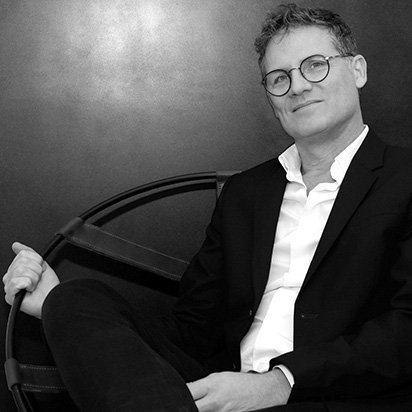
Challenges in the Portuguese car market: the industry perspective
Hélder Pedro
Sustainable practices
Pedro d’Orey
Founding partner of QuartoSala

For an interior design company such as QuartoSala, the issue of sustainability is not only an internal challenge, but also a matter of communication and positioning.
We all know the huge responsibility we have as interior designers to be part of a process that will aim to change the mindset of the consumer, and also to rethink a number of obsolete practices that contribute nothing to change.
We think that part of the change towards sustainability is in the hands of the consumer, and another part in the official regulation of the entire production chain.
For us at QuartoSala we know that our entire investment should be made in training the client, and promoting awareness about good consumer practices.
Our experience with high standard Italian furniture design brands such as Minotti, B&B Italia or Poliform, has shown us that there has been a rapid change in mentalities with regard to sustainability processes related to production and material selection. But what has really changed in luxury design brands’ attitudes in general is the interest in better informing the consumer about their sustainability practices, greatly driven by the pressure they feel from the market.
Never has our responsibility as designers and prescribers been more important in consolidating this much-needed change of mindset. It is us, designers and architects, who are between the brands and the final user, and it is imperative to filter all this information that is provided to us about each equipment or brand, so that the client doesn’t get lost in a ‘sea of commercial arguments’ that may try to mislead him.
Only with valid information can the client make good purchasing decisions and be sure that he is part of a process of changing mentalities.
But it is not enough to guarantee good production practices. There is also a long way to go in terms of marketing and product promotion models.
For example, at the gigantic Milan fair, which QuartoSala visits every year, stands are set up to last only six days. Companies such as Minotti have been rethinking this model by giving a second use to these ephemeral installations by transforming them into film sets for their own promotional films that would have to be set up afterwards.
The fact of doing it during the Milan fair itself, at night time, is an example of a second use of an ephemeral space, transforming a marketing action that in principle would be unsustainable into something less reproachable.
We all know the huge responsibility we have as interior designers to be part of a process that will aim to change the mindset of the consumer, and also to rethink a number of obsolete practices that contribute nothing to change.
We think that part of the change towards sustainability is in the hands of the consumer, and another part in the official regulation of the entire production chain.
For us at QuartoSala we know that our entire investment should be made in training the client, and promoting awareness about good consumer practices.
Our experience with high standard Italian furniture design brands such as Minotti, B&B Italia or Poliform, has shown us that there has been a rapid change in mentalities with regard to sustainability processes related to production and material selection. But what has really changed in luxury design brands’ attitudes in general is the interest in better informing the consumer about their sustainability practices, greatly driven by the pressure they feel from the market.
Never has our responsibility as designers and prescribers been more important in consolidating this much-needed change of mindset. It is us, designers and architects, who are between the brands and the final user, and it is imperative to filter all this information that is provided to us about each equipment or brand, so that the client doesn’t get lost in a ‘sea of commercial arguments’ that may try to mislead him.
Only with valid information can the client make good purchasing decisions and be sure that he is part of a process of changing mentalities.
But it is not enough to guarantee good production practices. There is also a long way to go in terms of marketing and product promotion models.
For example, at the gigantic Milan fair, which QuartoSala visits every year, stands are set up to last only six days. Companies such as Minotti have been rethinking this model by giving a second use to these ephemeral installations by transforming them into film sets for their own promotional films that would have to be set up afterwards.
The fact of doing it during the Milan fair itself, at night time, is an example of a second use of an ephemeral space, transforming a marketing action that in principle would be unsustainable into something less reproachable.
